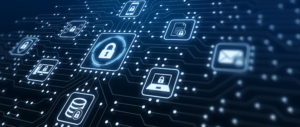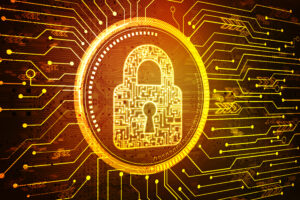Cybersecurity Awareness Month – Cyber Hygiene
Introduction
Cyber hygiene is a shared responsibility that all departments must prioritize in order to keep an organization secured and protected. It can also help organizations maintain their health and prevent security incidents.
What is cyber hygiene?
Cyber hygiene are sets of practices that organizations and individuals regularly perform to maintain the security and health of data, devices, networks, and users. These practices allow an organization to improve their online security and maintain system health. Adopting a security-centric mindset helps individuals and organizations mitigate potential security breaches.
Goal of cyber hygiene:
The goal of cyber hygiene is to keep user data safe and personal and professional information protected from threats. Specifically, cyber hygiene:
- Protects personal and business data by ensuring that personal, financial, and business related data is shielded from unauthorized access, theft, or breaches.
- Prevents malware infections by reducing the risk of malware, including viruses, worms, spyware, ransomware, and trojans, from infecting systems.
- Guards against phishing and social engineering attacks by educating users about the signs of deceptive tactics, so that they are better prepared to avoid falling for scams.
- Maintains system integrity by ensuring that computer systems and networks operate effectively and are free from vulnerabilities that can be exploited by attackers.
- Ensures continuity of operations for businesses and critical infrastructures by maintaining operations without interruptions. Good cyber hygiene practices can help prevent disruptions due to cyber incidents.
- Maintains compliance with regulations and standards by practicing good cyber hygiene.
Benefits of cyber hygiene
To protect data and minimize the risk of security vulnerabilities, good cyber hygiene practice is essential. Updating computers and providing routine software maintenance is beneficial to security. Maintaining good cyber hygiene has the following benefits for businesses:
- Minimizing vulnerabilities: Cyber hygiene helps to minimize the vulnerabilities that cyber attackers can exploit. Organizations can reduce security gaps with regular updates to software and firmware, applying security patches, or using up-to-date antivirus and malware solutions. Preventing common cyber threats: Implementing cyber hygiene practices is a crucial tool for preventing and mitigating common cyber threats. Phishing attacks, credential theft, and social engineering techniques can be effectively stopped by implementing a robust password management system, using two-factor authentication. Cyber hygiene allows people to identify and prevent possible risks by raising awareness of those threats and encouraging good user behavior. An additional layer of protection can be provided to your home computers and connected devices by running a security gate that uses a virtual private network.
- Strengthening cybersecurity defenses: A strong cybersecurity strategy is based on good cyber hygiene. This strategy establishes the basis for carrying out technological controls, policies, and procedures to protect against cyber threats. To ensure that security measures are consistently applied, monitored, and updated, organizations and individuals should have a security-focused mindset by adhering to cyber hygiene practices. The overall level of cybersecurity protection is reinforced by this proactive approach.
- Reduced costs: By reducing the need for costly security measures and avoiding fines or other penalties for failure to comply with regulations, good cyber hygiene can help companies save money.
- Improved reputation: Customers, partners, and other stakeholders will likely view a company that shows good cyber hygiene positively. This could lead to an improvement in sales and growth opportunities.
- Greater employee productivity: Employees are less likely to experience disruptions due to malware or other security breaches when the business has good cyber hygiene practices. It is also possible to increase productivity and reduce the number of missed deadlines.
Challenges of cyber hygiene
Cyber hygiene signifies the practices and procedures people and organizations take to maintain a healthy level of cybersecurity and protect themselves against different threats. Preserving efficient levels of cyber hygiene can be difficult due to an assortment of factors. Some of the main challenges include:
- Human factor: Even with technological advances, cyberattacks can be successful through social engineering tactics that exploit human behavior.
- Threat landscape: Hackers are always coming up with different attack techniques. Staying current with the latest threats and countermeasures is a challenge for organizations.
- Complexity of technology: As technology advances, systems become more complex and interconnected. This complexity can lead to unintended vulnerabilities and make it difficult to guarantee consistent cybersecurity across all devices and networks.
- Patch management: Keeping software, operating systems, and applications up to date with the latest security patches is vital for preventing vulnerabilities from being exploited.
- Shadow IT: Using unauthorized or unmanaged devices, software, or services within an organization can lead to security vulnerabilities that are difficult to monitor and manage.
- Mobile and remote workforce: Remote work and the use of mobile devices can increase an organization’s attack surface and complicate cybersecurity efforts. Mobile devices and external networks may not be within the direct control of the organization’s security infrastructure.
- Third-party risks: Some organizations depend on third-party vendors, whose security practices can have negative impacts on an organization’s security. Ensuring that third parties maintain good cyber hygiene is a challenge.
To address these challenges, it’s essential to establish a culture of cybersecurity awareness, provide regular training and education, implement multi-factored security controls, and constantly adjust to the evolving threat landscape.
Best Practices:
- Use strong and unique passwords: Employees should use complex passwords that include a combination of uppercase and lowercase letters, numbers, and special characters. Avoid using easily guessable information like birthdays or names. Use a different password for each account.
- Enable multi-factor authentication (MFA): Whenever possible, enable MFA for your online accounts. This adds an extra layer of security by requiring a second form of verification in addition to your password.
- Regularly update software: Keep your operating systems, applications, and software up to date with the latest security patches. Cyber criminals often exploit vulnerabilities in outdated software.
- Use reliable security software: Install reputable antivirus and anti-malware software on your devices and keep them updated. This software can help detect and prevent various types of malicious software.
- Be cautious with email and attachments: Be wary of unsolicited emails, especially those with attachments or links. Avoid clicking on links or downloading attachments from unknown sources, as they may contain malware.
- Educate yourself and others: Stay informed about common cyber threats, phishing techniques, and social engineering tactics. Educate your family, friends, and colleagues about these risks as well.
- Secure Wi-Fi networks: Use strong passwords for your Wi-Fi networks and avoid using default router passwords. Enable network encryption (WPA3 or WPA2) to protect your wireless communications.
- Backup data regularly: Regularly backup important data to a secure location, such as an external hard drive or a cloud storage service. In the event of data loss due to cyberattacks, you can restore your information.
- Limit information sharing: Be cautious about the personal information you share online, especially on social media platforms. Cyber criminals can use this information for targeted attacks.
- Secure mobile devices: Apply the same security practices to your mobile devices as you do for your computers. Set up strong PINs or biometric authentication methods and keep your device’s operating system updated.
- Regularly review account activity: Monitor your financial and online accounts for any suspicious or unauthorized activity. Regularly review your bank and credit card statements.
- Secure physical areas: Secure areas if necessary to protect devices that store sensitive information.
- Implement firewall protection: Use firewalls on your devices and networks to filter incoming and outgoing traffic providing an additional layer of defense against cyber threats.
- Practice safe online shopping and banking: Only make transactions on secure websites (look for “https://” and a padlock icon in the browser’s address bar) and avoid conducting sensitive activities on public Wi-Fi networks.
- Stay skeptical: Be cautious of offers that seem too good to be true, as they might be scams. Verify the authenticity of websites and sources before providing personal information or making financial transactions. Never click links from suspicious emails.
Learn more here.







